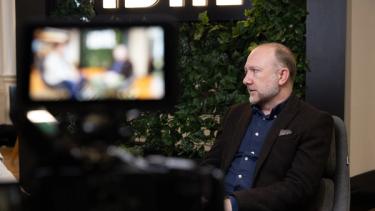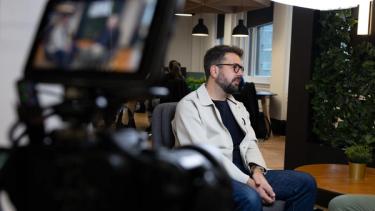Insight14 min read
9 steps to creating an effective paid media strategy
Tue Apr 27 2021 | Marketing Team

- Insight
- Performance
- Paid media
Tags
Are you getting the results you want from your paid media? If not, your strategy could be in need of an overhaul. Creating and implementing a successful paid media strategy isn’t as difficult as it sometimes seems. You can drive ROI and see those all-important conversions increase by setting your paid media foundations up for success and building on them over time. In this blog and infographic, we cover nine steps that will help you create a strong paid media strategy. From goal setting to competitor analysis, audience stacking and landing page optimisation, learn how you can build brand awareness, generate clicks, improve web traffic and convert users through a straightforward approach to paid media.
Define your goals and budget
Figuring out where you want to be is the best place to start. Defining your goals is a critical part of measuring the success of your paid media. Start by asking questions such as:
- What do I want to accomplish with my paid media?
- What metrics are most important to my business?
- What is my budget?
Considering these types of questions will get you thinking on the right track. If your objective is to generate brand awareness, is impression volume the only metric you will use to measure success? Or maybe you’re more interested in conversions. But what is a conversion to your business? Is it a lead generation form being submitted or the purchase of a product? These starter conversations will then underpin the development of your strategy.
Analyse the competition
Taking stock of where your business sits within the competitive landscape is important. This process helps you define exactly who your paid search competitors are and what makes them successful, highlighting where you could be losing potential customers and how you can compete. Using our in-house PPC analysis tool, we:
- Identify who your real online competition is
- Provide insight into their campaigns
- Identify who is achieving a better CPC than you
Want to find out about your competition? Fill in the form and a member of the team will be in touch to discuss your competitor analysis.
Get to know your audience and target them
Your audience is what should connect all your different paid media channels. Taking an audience first approach to paid media unlocks the real potential behind your strategy. But this means really getting to know who your audience are. With countless audience types available, targeting options can get confusing. Focus on segmenting your audience types by the different stages of the funnel:
- Top of funnel: During the awareness stage, your audience might not know who you are, but their online behaviour suggests they’re interested in what you offer. If your objective is to grow brand awareness, target larger audiences. For example, Facebook’s interest audiences or Google’s affinity audiences would be ideal for this campaign type.
- Middle of funnel: At this point, users already know what they want but they’re still researching who they want to convert with. During the middle of the funnel, two things usually occur. Firstly, the discovery where users are discovering potential brands to convert with. Secondly, consideration involves users being in the mix. This is a good time to use Google’s in market audiences as the search engine has already collated the audience for you based on behaviours, trends and the likelihood of a user converting.
- Bottom of funnel: This is the point when a user takes action and converts. At this stage, machine learning can be used to build lookalike audiences and your ads can be amplified with remarketing. While the bottom of the funnel is where action takes places, it’s not the only stage that matters. Without considering the upper funnels, it becomes much harder to encourage users to take action when the time is right.
Once you’ve found an audience that works for your business, you can then scale it and place your ads in front of more like-minded people. Stacking these audiences is what will drive your paid media success, something we’ll discuss more in-depth next…
Choose your channels
Placing the same message across multiple channels including social ads, display ads, discovery ads, Shopping ads and video campaigns can maximise the effectiveness of your campaigns. It also gives you a better chance of optimising your budget and reaching relevant people while they actively browse the web. But which channels are right for you? Taking an audience-first approach uses your audience data to inform your strategy. Rather than targeting each channel in silo, you can build a connected strategy across the paid media channels to reach your customers wherever and however they browse. Rather than thinking I want to ‘do’ Instagram advertising, it becomes more about amplifying your audience across the different platforms. Taking this channel-agnostic approach allows you to stack your audiences to drive better results. Take a look at the example below to see how it works:
- Your PPC campaign is performing well for the keyword ‘black leggings’. Digging deeper, we find that conversions are higher for users who have an affinity to fitness.
- This insight can be used to ensure search impressions share is as high as profitably possible for specific keywords for a specific audience.
- The same audience data can then be used to direct media spend towards building a Facebook campaign that targets a similar audience.
- You could take this one step further by applying the same strategy to video across YouTube campaigns that target the same audience type. This video creative could even be adapted and used with Sky AdSmart.
Define your offer
Your offer is different to the product or services your business supplies. Your business is created around your product or service while your ad campaign is created around the offer. It’s the starting point for your ad campaign. Get it right and your campaign is likely to perform better. But put together a bad offer and your ad is less likely to engage and convert. So, what are you offering your audience? Why should they convert with you over a competitor? Your offer could be the unique combination of your product or service with an added promotion to entice users.
Consider your ad creatives
The creative element of your ad is what your audience sees. No matter how clever your audience strategy is, how well set up your campaigns are or how well optimised your account is, your ad creatives can determine the success of your campaigns. An effective ad creative depends on your business, your audience and your objectives. There are a few elements to keep in mind when designing ad creatives:
- Consider the ad format: Each paid media channel often offers multiple ad types whether it's video, sponsored posts or carousel ads. Which ad type is most appropriate for your campaign needs to be based on your objectives and this will, in turn, inform the creative assets you require.
- Your message matters: Why should the user convert with you? Make sure your key points are on-brand and placed in the limelight of your paid ads. We advise keeping copy short and snappy so you can get your message across fast. Also, consider your text to image ratio as some platforms will have restrictions in place for this.
- Highlight your CTA: Users will click on your CTA because it matches an action they want to take. What action do you want your users to take? Your CTA needs to be clear, compelling and engaging such as ‘Shop Now’, or ‘Learn More’.
- Imagery choice: When words are limited, your choice of imagery becomes all the more important. Be mindful of your imagery choice to ensure it will resonate with your audience and that it is relevant to what you are offering. Make sure you consider the image file size as there are often restrictions in place around these.
- The power of animation: Movement is a good way of capturing your audience’s attention. However, when it comes to animation, less is usually more. Adding too much animation can be distracting and can cause your ad to lose impact.
When considering ad creatives, this is a good time to also take into account any production limitations your marketing team may encounter. For example, do you have an in-house designer who can help you create these assets, or will you need the support of an agency?
Don’t forget about your landing page
There’s no point spending all this time on your paid media ads if your landing page isn’t up to scratch. The key is to understand what your audience wants to see rather than just designing a page that looks good. Here are our five tips to creating a landing page that converts:
- Highlight your compelling offer: Consider your USPs and why you think a user should convert with you – be sure to highlight this on your landing page.
- Keep it simple: Don’t overwhelm users with too much information, distracting designs or an unclear pathway to conversion.
- Above the fold: Your important features such as your CTA, any forms and social proof should be displayed above the fold.
- Optimise for each device: Your landing page conversions are likely to suffer if they’re not optimised for mobile. Make sure you consider different devices and operating systems when creating your landing pages and design with the most valuable ones in mind.
- Match your ad messaging: Users will click your ad because it matches what they want to do. As such, your landing page needs to reflect your CTA messaging and vice versa otherwise you will end up paying for clicks that don’t convert.
Conversion rate optimisation (CRO) can help you get more from your landing pages and paid media efforts. Removing the barriers in your customer’s online user experience helps to increase onsite conversions and really get the most from your website traffic and media spend.
Measurements and metrics
Having a clear understanding of performance metrics will help you identify which ones you need to report on. When you measure your paid campaign performance, don’t limit your attention to just one or two metrics as this may give you a false representation. Some of the most common paid media metrics to track include:
- Click through rate (CTR): This is the number of times your advert has been clicked on in comparison to the number of times it has shown up in searches. The higher this rate, the better.
- Cost per acquisition (CPA): CPA is when Google uses your click-through rate and conversion rate to predict how many times your ad needs to be clicked before conversion.
- Cost per click (CPC): This is how much it’s costing your business when a user clicks on your ad.
- Impressions or ad view: This metric quantifies the number of views or engagements your ad has received.
- Conversion rate (CvR): The rate at which a click results in a conversion.
- Quality score: Your quality score is a rating from one to 10 based on the overall relevance of your ads and landing page when a user searches for your target keywords.
Selecting the right attribution model for your business is also a crucial element of measuring your campaign performance. Attribution modelling allows you to gain more accurate data on which channels play the most important roles in conversion. However, if you choose the wrong model, it can affect how you report on your campaigns and an inaccurate representation.
Test and learn
Insight fuels better action. It’s important to set time aside for regular testing, reviewing and learning to improve future campaign performance. Keep in mind you can optimise your budget across the different channels based on performance. Once the campaign has launched, make sure you adapt your strategy based on what’s driving results.
Bringing it all together
The paid media landscape can be overwhelming. There are countless options when it comes to partners, channels, audiences and types of campaigns that you can leverage for success. That’s why it’s so important to start with an effective strategy that can provide the foundations to hit your paid media objectives. If you’re not seeing the results you want from paid media, it could be time to seek out advice from industry experts. As a specialist agency, we simplify the complex nature of paid media. We are driven by results and our aim is to help you reach your objectives through a straightforward, no-nonsense approach. Is your paid media doing all it can for your business? Get in touch with us to find out how we can make your strategy a higher-performing one.


